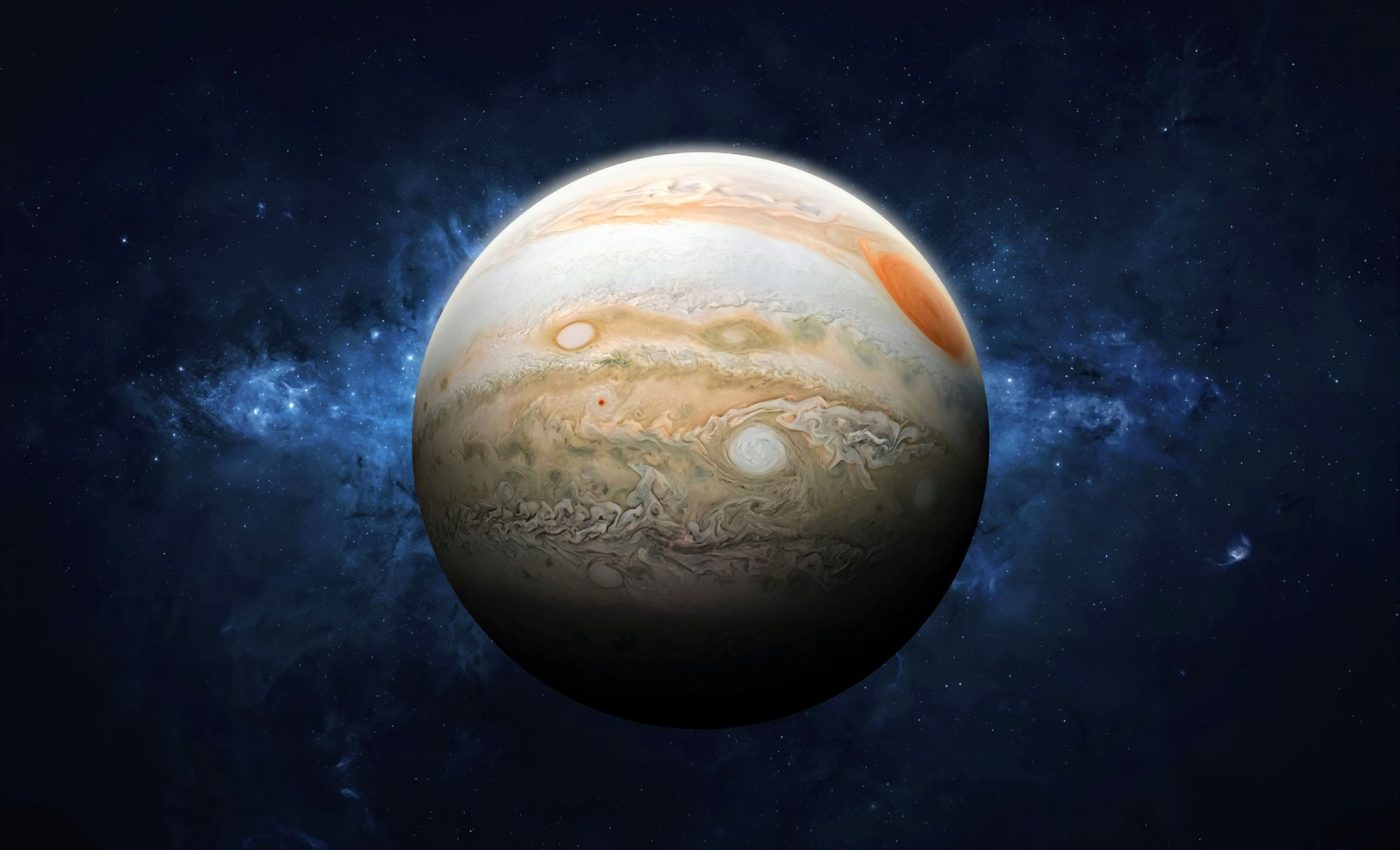
How do giant planets form?
Scientists have developed a new model to gain insights into the formation of giant planets like Jupiter.
The model, which provides a more comprehensive understanding of the processes involved in planet formation, could significantly expand our knowledge of planetary systems. The research was led by experts at Ludwig Maximilian University (LMU).
Theories on giant planet formation
In our solar system, planets are categorized by their characteristics and positions relative to the Sun: the inner rocky planets (Mercury, Venus, Earth, Mars), followed by the asteroid belt, then the gas giants (Jupiter, Saturn), the ice giants (Uranus, Neptune), and finally the Kuiper belt with its comets.
Traditional theories posited that giant planets formed through the collision and accumulation of small, asteroid-like bodies called planetesimals, followed by the gradual accretion of gas over millions of years.
However, these theories fail to adequately explain the existence of gas giants far from their parent stars or the formation of Uranus and Neptune.
The new model developed by LMU astrophysicists, in collaboration with the ORIGINS cluster and the Max Planck Institute for Solar System Research (MPS), is the first to incorporate all the critical physical processes that influence planet formation.
Rapid formation of gas giants
According to the findings, annular perturbations in protoplanetary disks – referred to as substructures – can initiate the rapid formation of multiple gas giants.
These results align with recent observations and suggest that the formation of giant planets can occur more quickly and efficiently than previously believed.
Setting the stage for planet formation
The researchers demonstrated that millimeter-sized dust particles in the turbulent gas disk of a protoplanetary system can accumulate due to aerodynamic forces.
This initial disturbance traps the dust, preventing it from spiraling inward toward the star. As a result, a concentrated area rich in “building material” is created, setting the stage for planet formation.
“When a planet gets large enough to influence the gas disk, this leads to renewed dust enrichment farther out in the disk,” explained co-author Til Birnstiel, a professor of theoretical astrophysics at LMU and a member of the ORIGINS Cluster of Excellence.
“In the process, the planet drives the dust – like a sheepdog chasing its herd – into the area outside its own orbit.” This mechanism can lead to the formation of another giant planet as the process repeats itself from the inside out.
Tommy Chi Ho Lau, the lead author of the study and a doctoral candidate at LMU, noted that this is the first time a simulation has traced the process whereby fine dust grows into giant planets.
Gas giants in young protoplanetary disks
In our solar system, the gas giants are located between five astronomical units (au) (Jupiter) and 30 au (Neptune) from the Sun, where one au is the distance from the Earth to the Sun, approximately 150 million kilometers.
The study reveals that in other planetary systems, similar perturbations could trigger planet formation at much greater distances and still occur rapidly. Observations from the ALMA radio observatory have frequently detected gas giants in young protoplanetary disks beyond 200 au from their stars.
Moreover, the model explains why additional planets did not form in our solar system beyond Neptune. According to the researchers, the available building material was depleted, halting further planet formation.
The study’s results correspond with current observations of young planetary systems, which often display pronounced substructures in their disks. These substructures are critical in the process of planet formation.
Giant planets in our solar system
The study suggests that the formation of giant planets and gas giants is more efficient and occurs more rapidly than previously thought.
This new understanding could refine our comprehension of the origin and development of giant planets in our solar system and explain the observed diversity of planetary systems.
Overall, the LMU team’s findings offer a more detailed and dynamic picture of how giant planets form, potentially reshaping our understanding of planetary system development and the conditions necessary for planet formation.
“Further code optimization is required to study the statistical effects and to model the diversity of planetary systems. And, planetary gas accretion is still an active field of research,” noted the study authors.
“Further investigations specifically on gas accretion are required to model the formation time of the solar system’s giant planets.”
—–
Like what you read? Subscribe to our newsletter for engaging articles, exclusive content, and the latest updates.
Check us out on EarthSnap, a free app brought to you by Eric Ralls and Earth.com.
—–













